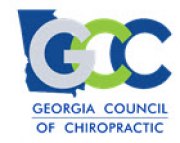
The The Georgia Council of Chiropractic and the Florida Chiropractic Society have issued a Joint Statement rejecting the recently passed Resolution by the Federation of Chiropractic Licensing Boards (FCLB) that prior to obtaining radiographic imaging, a treating Doctor of Chiropractic must inform the patient of the "material risks" of x-ray.
The FCLB, which is not a government agency, does not represent the interests of chiropractic trade organizations, their members nor the patients they serve has adopted language regarding x-ray which represents a threat to public health according to the Foundation for Vertebral Subluxation and several other organizations.
Despite actions taken to warn the FCLB regarding the implications of such wording the FCLB went ahead and adopted the Resolution. Prior to the meeting the International Federation of Chiropractors and Organizations (IFCO) and the ChiroFutures Malpractice Insurance Program both sent letters to the FCLB and its President Karlos Bohgosian DC urging them to reconsider the dangerous wording.
Since its adoption, the Chiropractic Society of Texas, the Foundation for Vertebral Subluxation (FVS), the Alliance of New Mexico Chiropractors (ANMC), The Palmetto State Chiropractic Association and now the Florida Chiropractic Society and the Georgia Council on Chiropractic have issued statements rejecting the Resolution and urging others to do the same.
Below is the full text of the FCS and GCC statement.
The Florida Chiropractic Society and The Georgia Council of Chiropractic have always expressed the importance of the use of X-ray in the Chiropractic profession for the assessment and management of Vertebral Subluxation.
The Federation of Chiropractic Licensing Boards (FCLB) recently passed a Resolution stating three key points including: The Nervous system is an essential element in chiropractic practice. (1-21), Recognizes the Chiropractic Subluxation as a known entity (3-21) and Radiographic Imaging is well established in health care for evaluating the structure of the skeletal system (2-21). However, in resolution 2-21 it states that that prior to obtaining radiographic imaging, a treating Doctor of Chiropractic will inform the patient of the "material risks" of x-ray.
This language imposes a duty upon the chiropractor and is a dangerous mandate from a risk management perspective. Those that wish to ban the use of x-rays for subluxation analysis will use this language and demand that chiropractors must disclose claims of oncogenic and genotoxic effects. They will claim that there is no evidence that patients x-rayed get better outcomes and that all of this must be disclosed to the patient. It also appears to require a separate informed consent and/or specific language to be added to already existing consent forms and processes.
Therefore as state chiropractic organizations representing the interests of chiropractors and the patients they serve, based on this language, we reject the Resolution as written and passed by the FCLB.
The FCS and The GCC stand by the fact that each individual patient deserves the best analysis, assessment, and clinical application based upon their needs. We support the use of x-rays for the analysis and management of vertebral subluxation and we encourage an evidence-informed approach to the use of radiography in the assessment of vertebral subluxation.
Doctors of chiropractic are trained to determine the safety and appropriateness of chiropractic care. This training includes the use of radiographs to detect and characterize vertebral subluxations, congenital and developmental anomalies which may affect the selection of chiropractic techniques, and conditions which may contraindicate certain chiropractic adjusting methods. Furthermore, radiography may reveal conditions requiring referral to another type of health care provider.
Although we recognize the efforts of the FCLB we believe this language represents potential threat to public health. We encourage other state associations, chiropractic technique organizations, malpractice companies and chiropractic educational programs to join and reject this Resolution.
The FCS and GCC will continue to preserve, protect and promote the philosophy, science and art of Chiropractic, your ability to locate, analyze and correct vertebral subluxations with the ability to use X-ray in our respective states and nationally.
